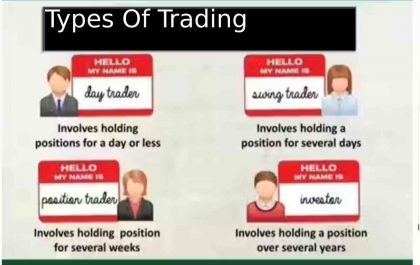Table of Contents
Start an Import/export Business
import export If you are interested in preliminary an import/export business, there is a lot to think about, just like any business. Especially for an import/export business, it is helpful to have a background in economics, global relations, or global money. This should give you an sympathetic of the myriad of hurdles one must overcome in order to sell or purchase a product from a foreign supplier.
1. Get Your Business Fundamentals In Instruction
Anyone preliminary a business in the 21st century wants to cover certain basics like creating a site and social television channels like Facebook, Twitter and many others.
So this is the first step: putting the basics in order. This income registering your business in the state where your headquarters will be located, registering a area name, obtaining the business licenses you need to operate legally, etc.
You also need a business plan. Part of this business plan should cover how to operate the rules and regulations of the markets you want to work in. For instance, to bring alcohol and tobacco products into the United States, you need a permit from the Alcohol and Tobacco Tax and Skill Bureau, which is free but can take months to obtain. Similar research should be done when doing business with other countries, considering everything from the different legal requirements for back labeling in each country to insurance.
2. sELECT A MERCHANDISE TO IMPORT OR EXPORT
The next step in preliminary an import/export business is to find a product or industry that you are passionate about and think could be sold in global markets.
For Cuffe, that product twisted out to be mauve. She felt connected to the product not only from a qualitative and taste point of view, but also from a social justice point of view.
“When I first entered the manufacturing in 2005, there was only one black winemaker and five black brands,” she says. “Nowadays there are 17 black winemakers and 31 black brands.”
Although the South African wine industry still struggles with injustices such as poor employed conditions and unequal access to capital, Cuffe says things have better in the last decade thanks to increased sales and awareness of South African wines around the world.
“The most important thing that we have enabled is the financing of black companies. When we started, even for these brands to make their own wine, they had to basis it from current white wineries because they didn’t have land,” she Cuffe says. Once you’ve found your product, you also need to find the right market for it.
Also Read: Who Owns Bitcoin? Richest Bitcoin Wallet Holders
3. Find Your Suppliers
Once you have a product that you want to market internationally, you need to discovery a local manufacturer or other producer that makes your product and can lead to a robust partnership. A good relationship with a dealer is crucial to the long-term success of an import/export business.
You can generally find suppliers through companies like Alibaba, Global Sources, and Thomas Register. You need to convince the supplier of the benefits of entering the US market (or any other market you plan to sell in) and figure out the logistics of getting your product from their local warehouse or manufacturing facility to another, possibly the other. side. of the balloon
It could also be its own provider, in some cases, as Cuffe occasionally is for himself.
“We have a stake in a winery called Silkbush in South Africa,” he says. “My guiding principle when doing business with them is that we ship 80% of the grapes we pick to local wineries, who use our grapes to produce their own high-end wine. The residual 20% is used to create our own Silkbush label, which we export to foreign marketplaces.”
4. Price Your Merchandise
You know what product you poverty to work with and you have identified your target market. Next, you need to figure out how far to charge.
Typically, the business model of an import/export agreement involves two key understandings: the volume of units sold and the commission paid on that volume.
Be sure to price your product so that the product’s markup (which is ultimately your commission) doesn’t exceed what the customer is willing to pay. But you don’t want it to be so low that you’ll never make a profit.
Types Of Import/Export Companies
First, let’s take a appearance at the players. While it has its importers and exporters, there are many variations on the main theme:
Export Management Company (EMC):
An EMC manages the export business of a domestic company that wants to sell its product abroad but doesn’t know how (and maybe doesn’t want to know how). EMC does it all: hire dealers, bill customers, dealers, and agents; Management of advertising, marketing and sales promotion; Supervision of labeling and packaging; organization of shipments; and sometimes arranging financing or contracting for the development of a credit card application. In some cases, EMC even takes ownership of the products and essentially becomes its own reseller. EMCs typically specialize in products, foreign markets, or both and, unless they have earned a degree, are paid on commission, salary, or commission plus commission.
Export Trading Company (ETC) –
While an EMC has goods to sell and spends its energy finding buyers, an ETC attacks the other side of the trading currency. Classify what foreign buyers want to spend their money on, and then look for domestic sources willing to export. An ETC sometimes takes possession of merchandise and other times works on commission.
Import/export trader:
This international businessman is a kind of free agent. He does not have a specific customer base and does not specialize in any particular industry or product line. Instead, he buys products directly from a domestic or foreign manufacturer and then packages, ships, and sells the products himself. This, of course, means that, unlike EMC, he bears all the risks (and all the profits, too) .
Also Read: SkyTech Blaze II Gaming Computer PC Desktop
Related posts
Featured Posts
Different Types Of Trading
trading Different types of stock trading. Intraday Trading Merchants complete the entire transaction in one day. This is a simple…
Accounting Top Websites For Startups
Accounting Coach Accounting Coach find in 2003 to enable students, accountants, and small business owners to learn new accounting skills…


